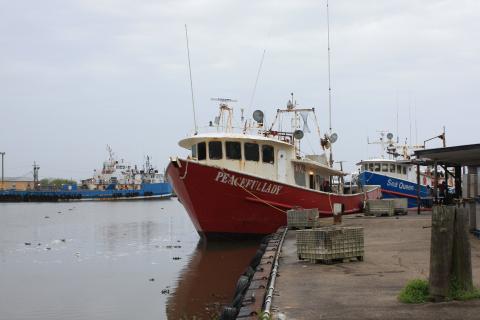After five successful years, the Open Ocean Trustees are pleased to announce the start of the 2022 season of the Oceanic Fish Restoration Project. The project engages pelagic longline fishermen to voluntarily adjust their fishing practices to restore fish like tuna, swordfish and other species. Because we expect to meet project restoration and participation goals, 2022 will be the last year of the project. This year features the highest number of participants to date: 13 pelagic longline fishermen—five from Florida and eight from Louisiana—are expected to participate.
The Gulf of Mexico pelagic longline fishery targets highly migratory fish species including yellowfin tuna, swordfish and others. Since 2017, about half of the fleet in the Gulf has chosen to participate in the project, which is led by NOAA, in partnership with the National Fish and Wildlife Foundation.
Monitoring data collected from previous project years show participating fishermen have successfully helped restore fish species in the Gulf that were injured by the Deepwater Horizon oil spill. Their participation has helped reduce fishing pressure on pelagic fish, allowing more than 20,000 fish that would otherwise have been caught, to grow and reproduce. These efforts are supporting a healthier Gulf of Mexico for generations to come.
The Project
Participating vessel owners are compensated to refrain from fishing with pelagic longline gear for six months of the year. The six month period is called a repose. During the repose, participants have the option to continue to fish using alternative gear types provided to them, which result in lower incidental catch of non-target species, called bycatch.
The alternative gears are offered because although the U.S. pelagic longline fisheries are considered some of the best managed in the world, they sometimes incidentally catch non-target species. Some of that bycatch caught with pelagic longline gear can die before the fishing line is hauled back.
Results: First Three Project Years
NOAA analyzed data from the 2017-2019 project years for the 2021 Summary Monitoring Report (PDF, 127 pages). The data show that restoration goals—to reduce fish mortality and help restore more than 60 species of pelagic fish in the Gulf—are being achieved. Other project results include:
- In total, vessel owners’ participation in the annual repose allowed approximately 23,000 individual pelagic fish (about one million pounds), including 10,600 individual tuna and swordfish, to remain in the water to grow and reproduce, contributing to future generations of fish.
- All of the participants, with the exception of one in 2018, opted to use the alternative gear choices in each of the project years analyzed so far.
- Fishermen caught fewer target species with alternative gear than compared to pelagic longline gear, but produced much less bycatch mortality, or dead discards—with almost 90% of all fish bycatch caught with alternative gear released alive.
Another of the project’s goals is to minimize negative economic effects in the fishery during the annual repose. But, there were not enough data—such as expenses, sales, and profits both during and outside of the annual repose months—to make conclusions about whether that goal was reached. To gain a better understanding of the economic effects of the project, more analysis is needed, which is expected in a future monitoring report after the final project year in 2022.
Overall, the project has had a positive effect on the fish species the Trustees are working to restore, thanks to a large portion of the pelagic longline fleet stepping up to help with the cause.
Project Purpose and Funding
Many pelagic fish in the Gulf of Mexico were injured or killed as a result of the 2010 Deepwater Horizon oil spill. The project is designed to help restore these fish species. The approximately $20 million Oceanic Fish Restoration Project is funded from the early restoration funds provided by BP as part of the legal settlement for the spill.
Monitoring Report and Other Products
- Deepwater Horizon Oceanic Fish Restoration Project 2021 Summary Monitoring Report (PDF, 127 pages)
- Fact Sheet (PDF, 3 pages)
- Infographic (PDF, 1 pages)
- NOAA Video: Restoring the Gulf: 10 Years After Deepwater Horizon


